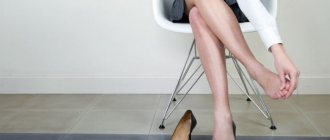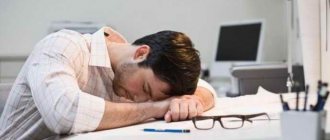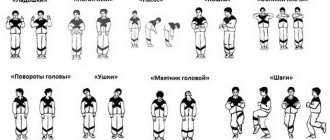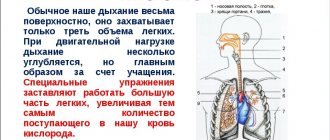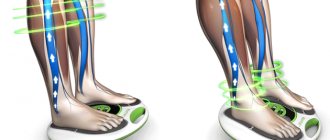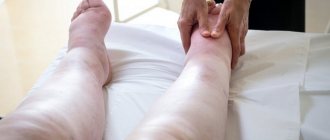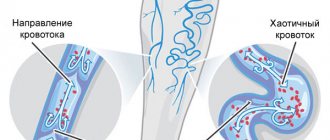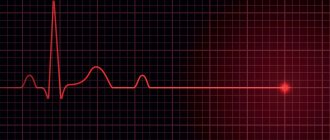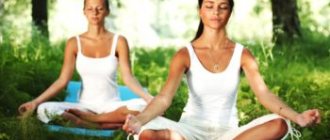Exercises to improve blood circulation in the brain can make blood vessels more elastic, expand the lumen, and normalize the supply of essential nutrients. Daily exercises help get rid of symptoms characteristic of vascular pathologies.
Stress, sedentary work, bad habits, genetic predisposition, poor nutrition, and previous diseases worsen a person’s condition. Gymnastics will not cure the disease, but will serve as an excellent addition to complex therapy.
Eliminate spasms in the brain
Impaired blood flow due to a narrowed lumen in large and small vessels causes:
- Headache.
- Nausea, gag reflex.
- Noise in ears.
- Decreased ability to work.
Vascular spasms are caused by severe anxiety, stress, and anxiety. The human condition is affected by changes in weather and climate, chronic diseases of the spinal column. Active movements, giving up bad habits, following a rest regime, medications and exercises for the blood vessels of the brain will help minimize the risk of developing pathology.
You can reduce the risk of atherosclerosis, angina and stroke by performing the following exercise:
- You need to exhale completely and hold your breath.
- The chest should be expanded as much as possible.
- While holding your breath after exhaling, you need to pull in your stomach and stretch it out.
- 10-20 times of exercise per day will be enough to strengthen blood vessels and have a great mood.
Benefits and indications
Head massage is needed to accelerate hair growth, improve cerebral circulation and stimulate metabolic processes, after which there is an increased supply of oxygen and nutrients to nerve cells. The procedure will help get rid of headaches caused by infectious diseases, tension, overwork, and stress.
Head massage is performed to improve blood supply to the brain tissue, eliminate vascular spasms, and activate the body’s immune system. Relaxation of the muscles of the cervical spine helps to normalize blood flow in the head area, which is associated with the prevention of ischemic damage to brain tissue. Other therapeutic effects:
- Activation of the central nervous system.
- Improving memory and mental activity.
- Improved vision.
- Increased performance.
- Normalization of intracranial pressure values.
After several sessions, sleep will normalize, anxiety and restlessness will disappear. To achieve a pronounced therapeutic result, doctors recommend taking a course of massage, which consists of 5-15 sessions.
We train the capillaries
The entire human body is covered in capillaries. These tiny vessels are responsible for the viability of every cell in the body. They supply nutrients and remove toxins from tissues. If the blood flow is blocked by a stuck together vessel, then nearby cells will begin to die.
Their breakdown products will slowly poison the body, causing serious illnesses. Therefore, capillaries and vessels should definitely be trained.
Exercises to improve blood circulation in the brain were developed by the Japanese Katsuzo Nishi:
- The simplest technique for capillaries and improving blood flow is called “vibration”. It is carried out in the morning. Raise your arms and legs up and shake them for a couple of minutes. There is a massage of blood vessels and recombination of lymph, which cleanses the body.
- Another classic exercise from the Japanese: “Goldfish”. Lying on a bed or on a hard surface, you should throw your hands behind your head and pull your toes towards you. The left heel should be pulled down as far as possible, keeping the spine and toe tense. At the same time, the arms pull the body up. After counting to seven, the body relaxes. Then strain the right heel. These exercises will relieve nervous tone, promote blood circulation, correct posture, and improve the functioning of internal organs.
Rules for head massage
Massaging the neck and head under the hair does not require particularly complex preparation. There are several general rules for carrying out a useful procedure.
- The massage is done either before washing your hair, or right during washing, but not after. This is mainly due to hygiene reasons.
- Before starting the procedure, wash your hands thoroughly with soap so as not to introduce bacteria into enlarged skin pores.
- Since the blood flow accelerates during the procedure and useful substances are quickly distributed throughout the internal organs, it is best to carry out it a couple of hours after eating, when the concentration of elements in the body is maximum.
Both for treatment and for cosmetic purposes, the procedure must be done regularly - daily or every other day, then its properties will be beneficial. To perform it correctly, you can study videos and photos of head massage.
Advice! It is recommended to carry out a useful procedure in the evening, since it is classified as relaxing, then it will be especially easy and pleasant to go to sleep.
We train brain vessels
When performing exercises for the blood vessels of the brain every day, you need to monitor your breathing and do them without jerks or sharp turns. You should start training in a good mood, when a person is cheerful and full of energy. If circles appear before your eyes, your health worsens, or pain occurs, interrupt the gymnastics and give yourself a few minutes of rest.
The daily training complex includes the usual movements:
- Tilts.
- Rotations.
- Somersaults.
A simple gymnastic complex will help improve blood flow in the brain:
- Standing, rotate your head in one direction for 2-3 minutes, then in the other direction.
- They raise their hands and interlace their fingers. Bend over 8 times, as if to chop wood, without unclenching your hands.
- Swing your legs. Place both hands in front of you. Raise your legs alternately, trying to touch your outstretched palms.
- Lying on your back, raise your legs synchronously, holding your lower back with your hands.
- Excellent training of the cerebral vessels occurs when performing the “Birch” stance. You need to hold out as long as possible.
A large number of repetitions and exercises performed through force will not give a positive result. It is better to do a repetition two or three times, but with high quality, focusing on each movement. The training is carried out in a well-ventilated area. You should not start exercising immediately after eating or on an empty stomach.
Motivation for brain exercise
If a person has impaired blood circulation, he needs help. If this process is not stopped, pathological changes will begin, and this will complicate future life. This disease is usually treated with medications. Their action is aimed at:
- dilate blood vessels;
- make the blood more liquid.
Despite the presence of important positive effects, medications are not without side effects. They have contraindications. This means that some sick people will not be able to use the drugs, and the problem will not be solved.
There is a way out of this situation - physical exercise. At first glance, it is strange to play sports to improve problems with your head. But the fact remains: exercises have proven their effectiveness and safety, and they are successfully used not only as a therapeutic, but also as a preventive measure, because everyone wants such problems not to bother them at an older age.
What are their advantages? There are quite a lot of them. They contribute to:
- improving memory, attention, concentration and other cognitive functions of the brain;
- improved coordination of movements (which is common in older people);
- restoration of the function of the organs of vision;
- development of spinal mobility (this is the prevention and relief of pain due to osteochondrosis);
- reducing the risk of problems with blood vessels (prevention of thrombosis and strokes).
Such exercises should become regular. If this is a system, then the effectiveness of medications prescribed by a doctor as the main and necessary treatment will be increased significantly.
We train the blood vessels of the legs
A set of exercises will relieve fatigue, swelling, and blood stagnation in the legs. After all, the best prevention against vascular diseases of the legs is movement.
- Standing on the floor, lean forward without bending your back. Try to reach your left toe, then your right. Repeat the exercise 10 times.
- Sitting on the floor, spread your legs and bend your torso, extending both arms in front of you. Try to reach your toes.
Light running will help improve your legs. You should not start jogging on a full stomach, feeling a headache or weakness in your legs. If your breathing becomes difficult while running, it is better to take a step.
Special training
The above physical procedures also have a beneficial effect on a person who does not have difficulties with blood circulation in the brain. Elderly patients characterized by such striking clinical symptoms should regularly do a number of exercises designed specifically to increase the filling of the brain with blood. The most popular and most effective procedures include, first of all, the following techniques.
Head on your shoulder
The exercise is done in a sitting or standing position. To perform it correctly, you should position yourself near a mirror. Initially, the head falls on the left shoulder, the neck relaxes as much as possible. After 7 - 10 seconds, the head should be tilted to the right shoulder. This training must be repeated 12 times daily.
Head up and down
First of all, the head lowers to the chin as much as possible, and the neck relaxes. Then the head is leveled and tilted back. This training should be repeated 12 times. During the execution, you need to limit sudden movements that lead to stretching of the neck muscles.
Shoulders up and down
In this exercise, a standing position is mandatory, since in a sitting position it loses its effectiveness. When the arms are lowered, the shoulders are raised as high as possible, then sharply lowered. After doing this, you need to lean forward a little, stretching your shoulders. Usually, 8–10 repetitions are enough to get the desired result.
Turns
The blood circulation itself in the brain is carried out by arteries passing near the neck. But blood penetrates into these vessels from others located much lower. Directly because of this, in order to activate blood circulation, it is necessary to warm up the spine. The point of training, which allows you to quickly achieve this effect, is to rotate the body around an axis. The arms are as relaxed as possible when turning the body. The number of repetitions is 10 – 15 times.
Side bends
Another training that helps improve blood circulation in the brain by increasing the lumen of blood vessels in the spine is symmetrical bending to the sides. To avoid back injuries and at the same time to achieve the greatest effect, you need to bend significantly lower, but without any sudden movements. The training should be repeated up to 15 times, after which the exercise is considered complete.
Pelvic rotation
Many people are skeptical about this exercise because they do not find in it a direct relationship with the vessels in the brain. In fact, during the process of rotation of the pelvis, blood circulation in the aorta increases, from which blood supplies a significant part of the spine. As for the technique of this manipulation, the rotation must be carried out in a circle, gradually increasing the radius of movement. Having made 5 circles in one direction, you should stop for 4 - 8 seconds, take a break, then do the same number of circles again, but only in the opposite direction.
This physical activity is performed only at the end of the exercise, since it significantly affects the vestibular apparatus.
Exercise to increase blood circulation in the brain is considered an important component in the prevention and treatment of vasospasm. Due to vegetative-vascular dystonia, their tone begins to decrease. Therefore, the patient experiences a headache, he becomes dizzy, and the blood supply to the brain will suffer. This phenomenon can be caused by stressful situations, excessive tension, changes in season or weather, and spinal diseases. It is recommended to use medications and perform special exercises to avoid unpleasant deviations.
It is necessary to choose an exercise depending on the patient’s current capabilities. Gymnastics in order to increase blood circulation in the brain is carried out not only as a healing remedy for restoring the functioning of an important organ, but also as an effective preventive measure.
We train the vessels of the neck and head
Cervical arteries, when compressed, cause migraines, dizziness, and surges in blood pressure. The vessels located in the neck can be strengthened by exercise. Specially designed exercises for the vessels of the head and neck are especially effective:
- The body is pressed tightly against the wall. Hold your breath while inhaling. Press your torso as hard as possible against the wall, trying to tighten your neck muscles. You need to hold on like this for a few seconds.
- Sitting down on a chair, put your hand to your forehead. When you inhale, your palm squeezes your head, trying to tilt it back. The neck tenses with resistance. You need to stay in this state for 5-10 seconds. As you exhale, the hand is withdrawn. 5-7 exercises are enough.
- The same movements are carried out when tilting the head down and to the sides.
The advantage of these exercises is that they can be performed 1-2 times throughout the day. They are as useful as possible and make the neck muscles strong.
The mechanism of the effect of massage on the body
Massage of the cervical-collar area provokes the production of hormones responsible for the transmission of nerve impulses. By influencing areas of the brain, they relieve the organ of excess fluid, which leads to the restoration of lymph flow and blood supply. Massage of this area is a good means of preventing diseases of the joints and spine. It is based on direct finger pressure on certain points or muscles.
Stimulation of acupuncture points that are connected to energy channels leads to the activation of neurons in the pituitary gland and hypothalamus. The response is the production of histamine, endorphin and serotonin. These hormones are responsible for metabolic processes, tissue regeneration, and the removal of toxins from the body.
Indications and contraindications for massage
Head and neck massage is recommended for diseases of the nervous system, poor circulation, chronic fatigue, depression, sleep problems, as well as during the recovery period after injuries and operations.
Contraindications:
- Mental disorders;
- Heart disease during exacerbation;
- Skin diseases and wounds in the area of treatment;
- Inflammatory processes;
- Increased body temperature;
- Spondylosis;
- Oncology;
- Acute cerebral stroke;
- Inflammation of the joints;
- Blockage of blood vessels.
Massage is not performed if you have an allergic reaction to one of the components of the cream or if the patient is in an insane state (alcohol or drug intoxication). During pregnancy, as well as after suffering from respiratory diseases, it is recommended to consult a doctor before attending a session.
How often should I use it?
The massage course is calculated individually based on the indications and condition of the patient. On average, each includes from 10 to 20 sessions, which are carried out every other day or every day.
The procedure time depends on the type of massage: acupressure of the head takes from 3 to 7 minutes, massage of the muscles of the collar area - from 20 minutes to an hour. Sessions follow the same pattern for both children and adults. The only exception is pregnant women. The peculiarity of massage for them is the limitation of the session duration: no more than 20 minutes.
To maintain the effect, sessions must be performed regularly: 2-3 times a week, and acupressure can be performed daily before bedtime.
Training for atherosclerosis
With this disease, exercises to improve blood circulation in the brain will be especially useful. Recommended:
- Run.
- Walking.
- Climbing stairs.
- Body tilts.
Balance training exercises:
- Turns the head with 2-3 second fixation in the accepted position.
- Lying on your back, straighten your legs, extend both arms. Clench your hands into fists, then slowly relax. 5 times is enough. Make circular movements with your brushes 5 times in one direction.
- Lying on your back, bend your elbows as you inhale. As you exhale, straighten. 5 times is enough.
- Lying down, bend your leg and straighten it. 2 movements are enough. Change legs and perform the same exercise. Then bend your legs alternately. 2 times is enough.
You can do gymnastics using dumbbells. You can’t set yourself a fast pace and overload your body with exhausting exercises. The duration of classes and physical activity should increase gradually.
The most effective exercises
This complex, like any training program, begins with a mandatory warm-up. In this case, it is advisable to walk around a little and rub the collar area with your fingers until you feel warm. After this you can proceed to the main part:
- Standing straight with relaxed arms, you need to alternately slowly tilt your head to the right and left. The movement is performed with the maximum possible amplitude, but without pain. If mobility is limited, do not persist.
- From the same starting position, the head first leans back freely and then leans forward . You need to touch your chin to your chest. If you have problems with balance, you can do bends while sitting.
- Again, while standing, alternate turns of the head in both directions . The chin should ideally be placed in line with the shoulder, but if this is not yet possible, there is no need to make additional efforts.
- The next exercise is performed with the shoulders . First, they need to be raised as high as possible , and after returning to their original position, they need to be pulled back.
- Another shoulder exercise is designed to develop the muscles of the shoulder girdle and improve blood circulation. In this case, first, circular movements are performed with the shoulders with arms down (in both directions), then the palms are placed on the shoulders and the cycle is repeated . Complete the rotation element with straight arms spread to the sides.
- Standing straight and lowering your arms freely downwards, you need to make alternate turns of the body in both directions with maximum amplitude. In this case, the pelvis should remain motionless.
- Perform a series of torso tilts: first from left to right, keeping your arms along your body, and then back and forth. In the latter case, the hands are on the belt.
- Standing straight and placing your palms on your waist, make several rotational movements with your pelvis in different directions . From the same starting position, perform the prescribed number of lunges on each leg.
- Squats will also help to activate blood circulation. There is no need to lower your pelvis too deeply - your thighs should be parallel to the floor at the lowest point. During a squat, your arms can be extended forward to maintain balance.
stretching exercises are great for cooling down .
- First, you need to stand on your toes and reach up with your raised arms.
- Then, keeping your legs straight, bend deeply forward (preferably with your palms touching the floor).
- At the very end, you can perform a deep plie - an analogue of a squat , but with your legs apart and your feet spread outward.
We train the heart vessels
In order for the blood vessels to remain normal, you should do exercises to improve blood circulation in the brain and warm up the heart. This is especially true for older people.
You need to start classes in the morning. Synchronized circular movements of the hands and feet in a supine position will help the body wake up. Gymnastics should be done while listening to the heartbeat. With a pulse per minute of 90-100 beats, the heart muscle does not have enough oxygen. You need to take a short break, just walking in place.
- Stand on tiptoes and try to walk, raising your knees high.
- Raise your hands above your head, clasping them together. Bend to the left, lifting your right leg off the floor. And vice versa. Repeat the movements 5-10 times.
- Make clapping movements with your palms on your shoulders.
- Make the popular "bicycle" movement. The legs “pedal”, the shoulder blades are pressed to the floor, the hands hold the lower back.
When training, the main thing is not the quantity, but the systematicity and correctness of the movements performed. It is necessary to strictly observe the “golden rule” - first load, then rest. Then the heart muscles will strengthen, the blood vessels will become more elastic, and the benefits of training will be noticeable.
Qigong gymnastics and other Chinese practices
The Chinese qigong technique combines the philosophical and medical concepts of the East; such exercises for the blood vessels in the brain are suitable for people of any age and health status. Approximate complex:
- Exercise 1. In a sitting or standing position, clasp your hands on the back of your head and press on it several times. This exercise is designed to improve cerebral circulation and help with dizziness.
- Exercise 2. Rubbing the face. After rubbing your brushes against each other to warm them up, apply them to your face. Massage the surface of the face, performing smooth, circular movements from the Ying-Xiang points (parallel in the area of the wings of the nose on the nasolabial groove), moving higher towards the forehead, then towards the cheeks. Do about 30 rubbings.
- Exercise 3. Exhale stale air. Inhale deeply, inflating your stomach and chest. Hold your breath, slightly raise your head and open your mouth, slowly releasing air from your stomach and lungs. Repeat 5-7 times.
The technique, developed by the ancient philosopher Lao Tzu to stimulate cerebral blood flow, is practiced today in his homeland of China. A simple workout you can do anywhere. The complex will take no more than 15 minutes to complete:
- Rubbing the eyes. Using the pads of the index fingers, gently rub the area of the eye sockets in a circular motion, covering the adjacent areas. Both eyes are rubbed at the same time.
- Pushing Di-tsang points (located parallel at a distance of about 1.5 cm to the sides from the corners of the mouth). With your mouth slightly open, push and press on the area of the points with the pads of your thumbs.
- Pressure on the area of the Sy-bai points (located parallel at a distance of approximately 1.5 cm below the eye orbits at the level of the pupil). Use the pads of your index fingers to press on the area of the points, directing the impact from bottom to top.
- Rubbing the nose. With both hands, rub the wings of the nose using the thenars (the raised area on the inner surface of the palm at the base of the thumb).
- Neck rubbing. Place your palms on the sides of your neck, and simultaneously perform movements directed from top to bottom with both hands.
- Imitation of combing hair. Spread your fingers like a hair comb and move along the scalp in the direction from the frontal area to the back of the head. Dip your fingers deeper so that they touch the scalp tightly, massage the skin as if combing.
- Heavenly drum. Cover your ears with your palms so that your fingers are on the back of your head. Perform clicks (sharp blows with the middle finger bent with the thumb) on the area of the Feng Chi points, which are located at the back of the neck parallel to the occipital bone.
Repeat each technique 16 times. After completing the complex, press your palms tightly to your ears and, with force, sharply tear your hands off. Repeat the procedure 3-5 times. Chinese exercises to improve cerebral circulation are simple and based on ancient knowledge.
Gymnastics for hypertensive patients
It is important to do head and brain exercises if you have high blood pressure. Vascular walls do not relax during hypertension, which means blood does not pass through them well. Fatty deposits make the situation worse. If left untreated, regular pressure surges can lead to serious illnesses.
If you have hypertension, do not bend or wave your arms, which increases blood flow to the brain. You should not hold your breath during muscle tension - this will increase the pressure.
The following exercises are suitable for hypertensive patients:
- Walking with body rotation. You can perform smooth rotations of the pelvis. The duration of the lesson is no more than 5 minutes.
- Sit on a chair. Raise your arms above your head. Stretch your legs. Slowly bend towards your knees, keep your neck straight, looking forward.
- In a standing or sitting position, while inhaling, spread your arms to the sides, while exhaling, lower them to your waist and tilt your torso to the right. Repeat the movement tilting to the left.
It has long been known that dancing and yoga for the blood vessels of the brain are an ideal means of treatment and prevention. With such loads, the vestibular apparatus is trained, blood circulation improves, and vascular tone increases. They also relieve psycho-emotional tension and stressful conditions - which is extremely important for vascular health.
Self-massage of the head at home
In order to experience all the benefits of a scalp massage for hair growth, you don’t have to go to a professional massage therapist. You can feel all the beauty and benefits of a scalp massage for your hair by doing it yourself - especially since, if you follow all the recommendations, it is not at all difficult. Self-massage of the head “accelerates” blood circulation and has a positive effect on hair thickness and its appearance. Let us make a reservation that self-massage is contraindicated if there are skin diseases or rashes on the hands and body.
Before you start the massage, take care of your hands: they should be clean, with neatly trimmed nails and always warm - cold provokes muscle tension
It is important that your hands move easily over the massaged area; if your hands sweat a lot, it is recommended to wipe them with a 1% formaldehyde solution
Head massage to stimulate hair growth is performed standing or sitting; the procedure is always completed and started with light stroking with minimal pressure. The most favorable time for a head massage to restore and stimulate hair growth is after bath procedures, when the hair has dried but is still damp. Turn on your favorite music, take a comfortable position. Remember: massage is, first of all, relaxation and elimination of negativity.
Don't go straight to the roots - start with massaging movements in the forehead, temples, and behind the ears. Try to do everything slowly and smoothly - enjoy the process. You need to massage only in the direction of hair growth, i.e. top down. The technique for massaging the head to stimulate hair growth is the same as during a classic massage: stroking - rubbing - effleurage - stretching - vibration - and stroking again. Using confident but gentle movements, massage your skin, pull your hair, strand by strand - feel the warmth rushing to your head
Finally, pay attention to your neck and shoulders. Regular self-massage will significantly improve your well-being and mood, and your hair will simply be transformed beyond recognition.
In addition to traditional massage, you can improve blood flow with the help of auxiliary means - for example, anti-stress goosebumps. It has a lot of advantages: inexpensive, accessible, effective. Not to mention how pleasant such a massage is (especially if someone else does it for you). For visible results, 5 minutes a day is enough.
